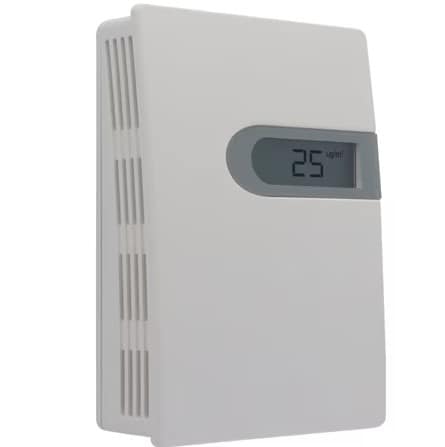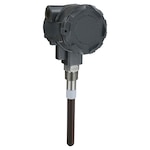
Air quality is shaped by more than just temperature and humidity, and one such critical factor to take into consideration is particulate matter (PM). These particles, which can range from dust and pollen to smoke and mold, have a direct impact on both human health and equipment performance. Monitoring particulate matter levels indoors and outdoors has become a priority across industries, offices, and research environments; particulate transmitters make that possible.
What is Particulate Matter?
Particulate matter is a mixture of solid and liquid particles suspended in air. These particles vary in size, shape, and composition. Particles that are 10 micrometers in diameter or smaller (PM10) are especially of concern, because they can be inhaled. Once inhaled, they can affect the lungs and heart, and in some cases cause serious health issues (epa.gov).
PM10: Particles 10 µm or smaller that can enter the upper respiratory system
PM2.5: Fine particles 2.5 µm or smaller that can reach deep into the lungs and even enter the bloodstream
The health risks of outdoor PM are well-established and form the basis of the EPA’s National Ambient Air Quality Standards (NAAQS).
Why Indoor Particulate Matter Monitoring Matters

Indoor environments introduce their own unique sources of particulate matter, often beyond what is found outdoors. Common sources include:
- Dust from building materials and daily activity
- Mold spores from moisture issues
- Pet dander in homes and offices
- Smoke and aerosols from cooking, smoking, or vaping
- Fibers from carpets, furniture, or industrial processes
Because these particles are inhalable, exposure can lead to respiratory irritation, allergic reactions, and in the long term, cardiovascular or pulmonary issues (epa.gov). In industrial settings, particulate matter may also damage sensitive equipment or compromise processes that rely on clean environments, such as in pharmaceuticals, electronics, or healthcare facilities.
By continuously monitoring indoor PM levels, building managers and engineers gain actionable insight into when to increase ventilation, add filtration, or introduce fresh outdoor air.
How Do Particulate Matter Sensors Work?
Most modern particulate matter sensors use laser scattering technology to detect airborne particles:
- A small fan or pump draws air into the sensor chamber
- A laser beam passes through the air sample
- Suspended particles scatter the light at measurable angles
- A photodetector collects the scattered light
- Internal algorithms calculate the concentration and size distribution of particles
This process enables real-time measurement of both PM2.5 and PM10, providing immediate feedback on air quality conditions. Because these sensors are compact, affordable, and reliable, they are increasingly embedded in everything from HVAC systems to portable consumer air quality monitors.
Common Applications
Particulate matter sensors are used across a wide range of industries and environments, including:
- HVAC and Building Automation: To adjust ventilation and filtration systems for healthier indoor spaces
- Industrial Facilities: To protect workers and equipment from particulate contamination
- Healthcare Settings: To maintain clean, controlled environments for patient safety
- Smart Home Devices: To alert occupants to poor indoor air quality from smoke, dust, or allergens
- Research and Education: To measure environmental air quality and support academic studies
Innovative Solutions from DwyerOmega
Series PMI Indoor Air Quality PM Transmitter
For reliable indoor particulate monitoring, the Series PMI Particulate Matter Transmitter delivers long-term stability and accuracy. Designed for both duct and wall-mounted applications, it provides continuous air quality data for HVAC systems and occupied spaces.
- High Sensitivity: Detects particles as small as 0.3 μm, ensuring even the finest airborne contaminants are measured
- Custom Alarms: Optional relay with settable alarm and control parameters allow the PMI to function as a stand-alone controller
- Durability: Built with overvoltage protection and up to 10 years of service life in auto mode, reducing maintenance and downtime
- Versatility: Application-independent design makes it ideal for both HVAC ducts and indoor environments
By integrating the Series PMI into your monitoring system, you gain a dependable tool for maintaining a healthier air supply, optimizing ventilation strategies, and ensuring compliance with indoor air quality goals.
Connect with a DwyerOmega Expert Today!



